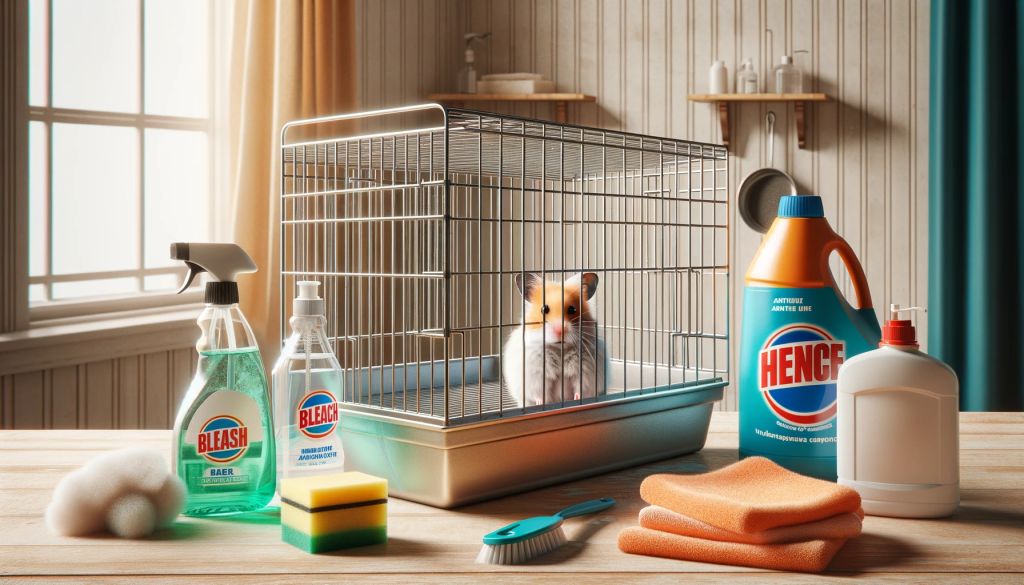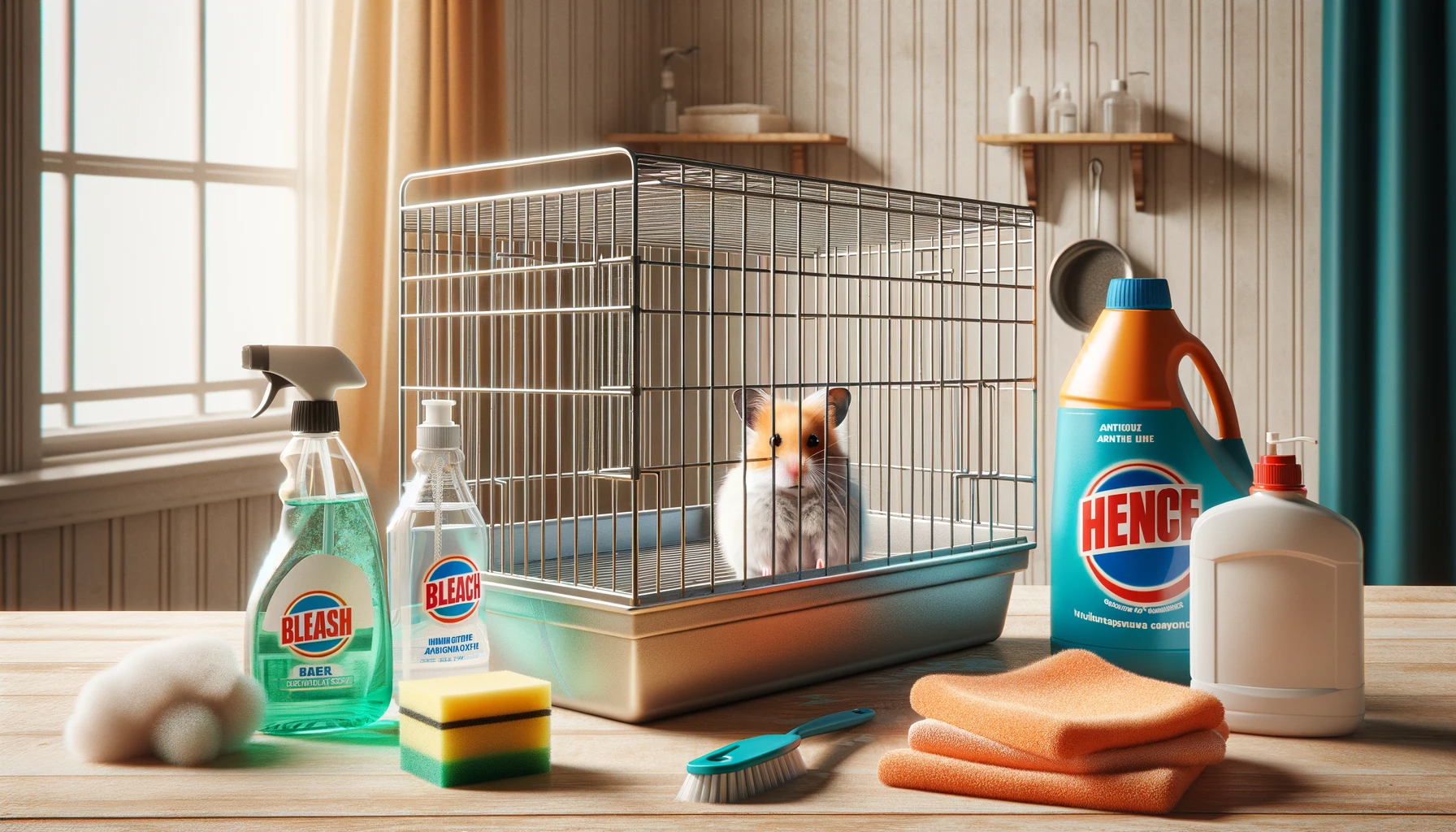Ensuring a clean habitat for your hamster, especially after incidents like wet tail, is crucial. A clean cage is essential for regulating the temperature and providing a conducive environment for your pet, particularly for a growing baby hamster.

Steps to Cleanse a Hamster Cage Post Wet Tail
After your hamster experiences wet tail, a thorough clean with a bleach solution, soap, and antiseptic is advisable. Drying the cage thoroughly before reintroducing your hamster is crucial.
Understanding the Importance
The wellbeing of a hamster greatly relies on the sanitation of its cage. Regular cleaning not only supports their growth but also prevents illnesses related to unhygienic conditions.
Critical Nature of Hamsters
These delicate creatures can’t be neglected, as even minor oversights might lead to significant health issues. Proper care includes attention to their tail, which can become wet from environmental moisture or from reaching outside the cage.
Preventing Wet Tail
Keep the cage away from potential wet areas to avoid the hamster’s tail from becoming damp, which could lead to a cold or more severe health problems.
Cleaning Procedure
1. Prepare a Cleaning Solution: Create a mixture of warm water and bleach, adding a few drops of germicidal detergent with a pleasant fragrance.
2. Remove the Hamster: Safely transfer your hamster to a clean area before starting the cleaning process.
3. Apply the Solution: Wash the cage with the bleach solution, ensuring all parts are reached.
4. Scrub with Soap: Use dish soap and a clean sponge to scrub the cage thoroughly to remove any dirt and residue.
5. Rinse Thoroughly: After scrubbing, rinse the cage with clear, cool water to remove all soap and bleach.
6. Dry the Cage: Air-dry the cage in a clean, well-ventilated area, or use a dry cloth to wipe it down. Ensure the cage is completely dry before using it again.
7. Wait Before Reuse: Allow the cage to return to room temperature, ideally waiting 24 hours before placing your hamster back inside.
Maintenance Tips
• Regular checks for humidity and temperature are necessary to ensure the comfort of your hamster.
• Place the cage in a locati0n where the hamster’s tail remains dry to prevent future wet tail incidents.
• Keep a close watch on your hamster’s growth and health, which can be indicators of the habitat’s condition.
• Regularly clean the cage with the steps outlined above to maintain a hygienic environment.
Final Considerations
Be mindful of the placement of your hamster’s cage to prevent the tail from becoming wet, which can lead to a damp and unclean habitat. If the cage does become dirty, promptly clean it using the specified method. By taking these precautions, you can foster a clean and safe environment for your hamster to thrive in.



